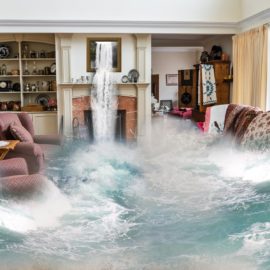
A new transmission tower goes up. Good news but are we ready for the hurricane season for power?
A new transmission tower is rising over Avondale as hurricane season begins, replacing the structure that crumpled onto the Mississippi River’s banks when Hurricane Ida’s winds kicked up last year. Built to withstand 175 mph winds, the new tower joins thousands of new distribution poles rated for Category 4 storms, and other improvements throughout the region. The reliability of the grid at a time of increasingly dangerous hurricanes is no small matter. Beyond the suffering of more than a million households and businesses that were left in the dark after Ida, outages that extended for days after the storm have been seen as a factor in at least a dozen deaths in New Orleans alone, left emergency responders scrambling for power and gas and threatened sewer backups throughout the metro area. But despite billions of dollars in repairs necessitated by the storms of the past two years, the region will start this year’s hurricane season still reliant on an aging transmission system that relies on just eight lines to get electricity to the area.
nola.com
Entergy is up beat not that there will not be blackouts but that they can respond faster.
For their part, officials from Entergy Louisiana and Entergy New Orleans say the improvements they’ve made will lead to a quicker recovery. “If we were to replay Ida, we’d have a similar approach to restore power,” said Deanna Rodriguez, CEO of Entergy New Orleans. “With stronger poles and towers, we’d be able to rebuild transmission more quickly.” But as is typical after storms, the massive repairs and upgrades replace only what was damaged. That leaves doubt about whether the older parts of the system, including the crucial transmission lines, will be able to withstand a similar storm. Entergy officials declined to answer questions about what specific weak points in the system remain or the velocity of wind they believe the system can withstand. But some observers are worried. “I don’t believe we’re in any better shape than last year,” said New Orleans City Council member Helena Moreno, who oversees the regulation of Entergy New Orleans. “I feel like the company really has to be pushed to come up with what are we doing for grid resilience, what would be the state-of-the-art system we could create.” Entergy executives, however, offered assurances that the system would fare better this year, particularly in areas that bore the brunt of Ida’s winds. “Particularly as you get to the lower parishes, there’s been an immense amount of investment,” said Phillip May, president and CEO of Entergy Louisiana. “Our expectations are that system would fare very well. That’s not to say that people’s homes wouldn’t be damaged and the power system wouldn’t go down.”
State of the art and New Orleans don’t go together. But repairs have been made in the vulnerable areas.
Ida brought into sharp relief the vulnerability of the region’s power grid, as all eight transmission lines into the south shore went offline and left the area in the dark. It wasn’t until three days after the storm that the first areas were reconnected to the grid. Some waited more than 10 days. In the hardest-hit areas, it took even longer. The extended outages were linked to the deaths of a handful of elderly residents who succumbed as the heat index hit 100, as well as at least two people who died of carbon monoxide poisoning from using generators. May said the repairs to the system meant the region was “in a much better position today than pre-Ida.” However, he acknowledged much of the system is still built to older standards — though he added that even the strongest grid isn’t impregnable. “What we know is we likely can’t build a bulletproof system. There is likely nothing we can design that nature can’t find a way to attack,” May said.
That said, the company is working to be able to quickly repair rather than making a perfect system.
Given that, company officials say they’ve been focusing on ensuring repairs after disasters are completed quickly rather than trying to build a system that can’t be disrupted. About 26,000 workers were brought in from elsewhere in the country during Entergy’s response to Hurricane Laura, a record broken by the 28,000 who assisted after Ida. The company is stockpiling equipment so it has what it needs on hand after a storm, May said. Entergy Louisiana has put its post-Ida costs at nearly $5 billion, with about $3 billion already being passed on to customers in the form of a surcharge that added about $20 a month to the average bill. Entergy New Orleans has estimated its costs at nearly $200 million and is planning to ask the City Council to add a similar charge. The Public Service Commission is now considering whether to make the company bear some of those costs, particularly since Entergy gave a $1 million raise for its top executive and paid dividends to shareholders despite the damage caused by Ida and Laura. A similar move could be afoot in New Orleans, Moreno said.
More extensive repairs and upgrades will that time and money.
More extensive fixes are likely a long-term project, which will cost billions and take years to complete. Both the City Council and the Public Service Commission, which regulates Entergy outside the city, have asked the company to present a menu of options for improvements in July. How those upgrades would be paid for is still an open question, though officials have said tapping federal infrastructure money could be one approach. A more comprehensive plan has been welcomed by advocates, who say the current approach is costly and does not fix the problems with the aging system or adapt to the more active hurricane seasons the area now faces. For most utilities, storm hardening and planning comes only after “the poles and lines fail rather than addressing potential failures in advance,” Alliance for Affordable Energy Executive Director Logan Burke said. Burke and others have been pushing to make solar power and other solutions a part of any approach in order to reduce the vulnerability to the larger transmission grid.
Grid reliability is only one of the worries as we move into this season.
The reliability of the region’s electrical grid is just one of many looming concerns as the 2022 hurricane season gets underway. Among the pressing challenges: Residents of areas hard-hit by Ida, from Lafourche and Terrebonne parishes to St. John and St. Charles, are preparing for what is expected to be another busy patch of weather while still working to repair damage from last year. And in and around the city, leaders are struggling to correct shortcomings in their plans to care for the vulnerable and the needy that were laid bare by Ida. When it comes to power outages, government officials and local groups are planning for how to better weather them. For example, the advocacy group Together New Orleans has started a project to equip houses of worship with solar panels and large batteries so they can serve as community centers after a storm. That could be crucial should transmission lines be cut again, since those would serve as the only sources of power in the city. While Entergy completed a new natural gas plant in New Orleans East a year before Ida, the storm showed that it could not be used if other transmission lines were not available. Moreover, it is too small to power much of the city. Entergy says the plant, which was sold to city officials as a way to improve hurricane preparedness, would still require outside transmission lines be reconnected before being brought online if a similar situation arose.
The city and Entergy are working together for setting up community centers as safety centers for residents.
New Orleans, with assistance from Entergy, is installing equipment on eight recreational centers and other buildings that will allow generators to be quickly hooked up and turned on, potentially allowing them to be used as cooling stations or shelters, said Collin Arnold, the city’s director of emergency preparedness. One is the Ernest N. Morial Convention Center, which was turned into a medical needs shelter and evacuation spot about six days after Ida. Seven facilities already have such equipment. But none of the centers will have generators on site. Instead, Arnold said, the city is relying on an agreement with Entergy to provide them after a storm hits. The smaller facilities — which could include libraries and houses of worship — could be powered by smaller, easily towed generators, Arnold said. But the Convention Center uses between 9 and 12 megawatts of power, enough to provide electricity to thousands of homes. Getting it online would require several massive generators. It’s not clear whether Entergy has those on hand or how quickly it would be able to secure them after a storm, particularly if other entities are seeking similar equipment. Arnold said the costs were too high for the city to purchase generators on its own.
Jefferson Parish is getting more generators.
Jefferson Parish is doubling the number of generators it has on hand to keep its sewer system pumping after it failed for several days after Ida. The parish has also set up contracts for more equipment and fuel, which was also in short supply after Ida. But officials said they still advise residents to be prepared for extended power outages. “I would like to make sure that people really understand that Entergy restoring power in 10 or 14 days after Ida was amazingly fast for the amount of damage we had to the system,” said Sarah Babcock, a top aide to Parish President Cynthia Lee Sheng. “With that level of storm, I don’t think it will happen that quickly again.”.
Once again we wait and see.



